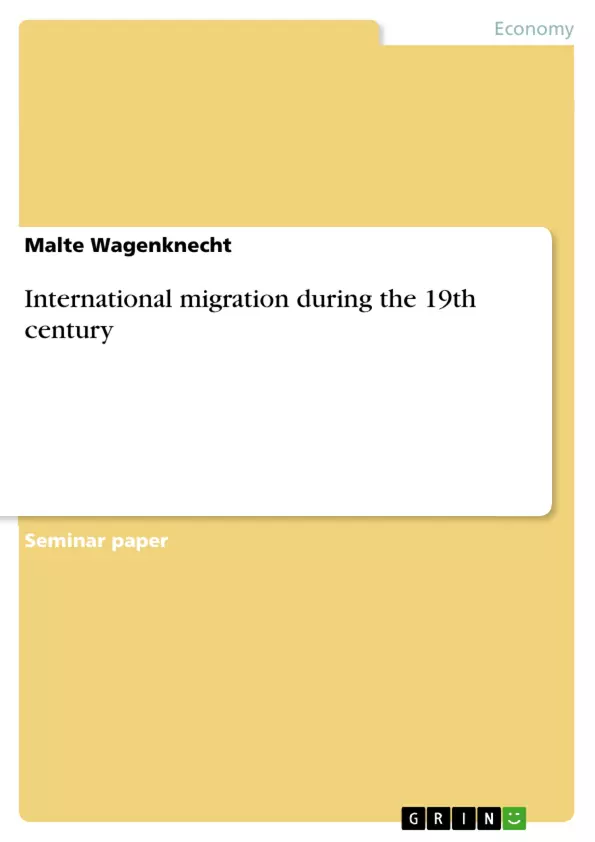Human migration denotes any movement of groups of people from one locality to another, rather than of individual wanderers. Over the course of prehistoric time and in history, humans have been known to make large migrations .
The term “migration” refers to the territorial mobility determined by economic reasons (e.g. the research of better working conditions) or politic reasons (e.g. the research of more suitable situations for the exert of collective and individuals rights).
The aim of this paper is to analyze the migration process that interested most of the 19th century. In order to understand the phenomenon I will try to find out the economic and social reasons and the individual motivations of migrants that led to this big and massive movement of human and capital resources. I will then try to understand which has been the importance of this phenomenon in the definition of the new cultural and economic world asset. The history of each of the countries is reflected in their emigration distribution patterns.
Table of Contents
- INTRODUCTION
- DIFFERENT KIND OF MIGRATION
- INTERNATIONAL MIGRATION
- MOTIVATIONS OF MIGRANTS: TWO MIGRATION THEORIES
- THE REASONS OF THE 19th CENTURY MIGRATION
- EXPORT OF CAPITAL
- SOME EUROPEAN CASES
- CONSEQUENCES
- CONCLUSION
- REFERENCES
Objectives and Key Themes
This paper aims to analyze the migration process that characterized the 19th century. It examines the economic and social reasons, as well as the individual motivations behind this significant movement of human and capital resources. The paper explores the impact of this phenomenon on the development of new cultural and economic assets, highlighting the influence of migration patterns on the history of various countries.
- Types of migration (voluntary, forced, temporary, permanent, internal, international)
- Motivations and driving forces behind migration
- The role of economic and social factors in migration patterns
- The impact of migration on the development of new cultural and economic landscapes
- The historical significance of migration patterns in shaping national histories
Chapter Summaries
The introduction provides an overview of the concept of human migration, distinguishing between voluntary and forced migrations, as well as temporary and permanent movements. It also emphasizes the significance of internal migration in shaping urban development and the economic growth of nations. The paper then focuses on international migration, exploring the motivations and driving forces behind it. The chapter on motivations discusses two prominent migration theories, providing context for understanding the reasons why individuals chose to migrate in the 19th century. The subsequent section delves into the specific reasons behind the 19th-century migration, examining the role of factors like the export of capital and the development of specific European economies. The final section briefly touches upon the consequences of migration, without delving into specific conclusions or revealing major insights.
Keywords
Migration, international migration, 19th century, economic history, social factors, motivations, capital export, urbanization, industrialization, cultural development, economic development.
- Arbeit zitieren
- Malte Wagenknecht (Autor:in), 2004, International migration during the 19th century, München, GRIN Verlag, https://www.grin.com/document/73587



